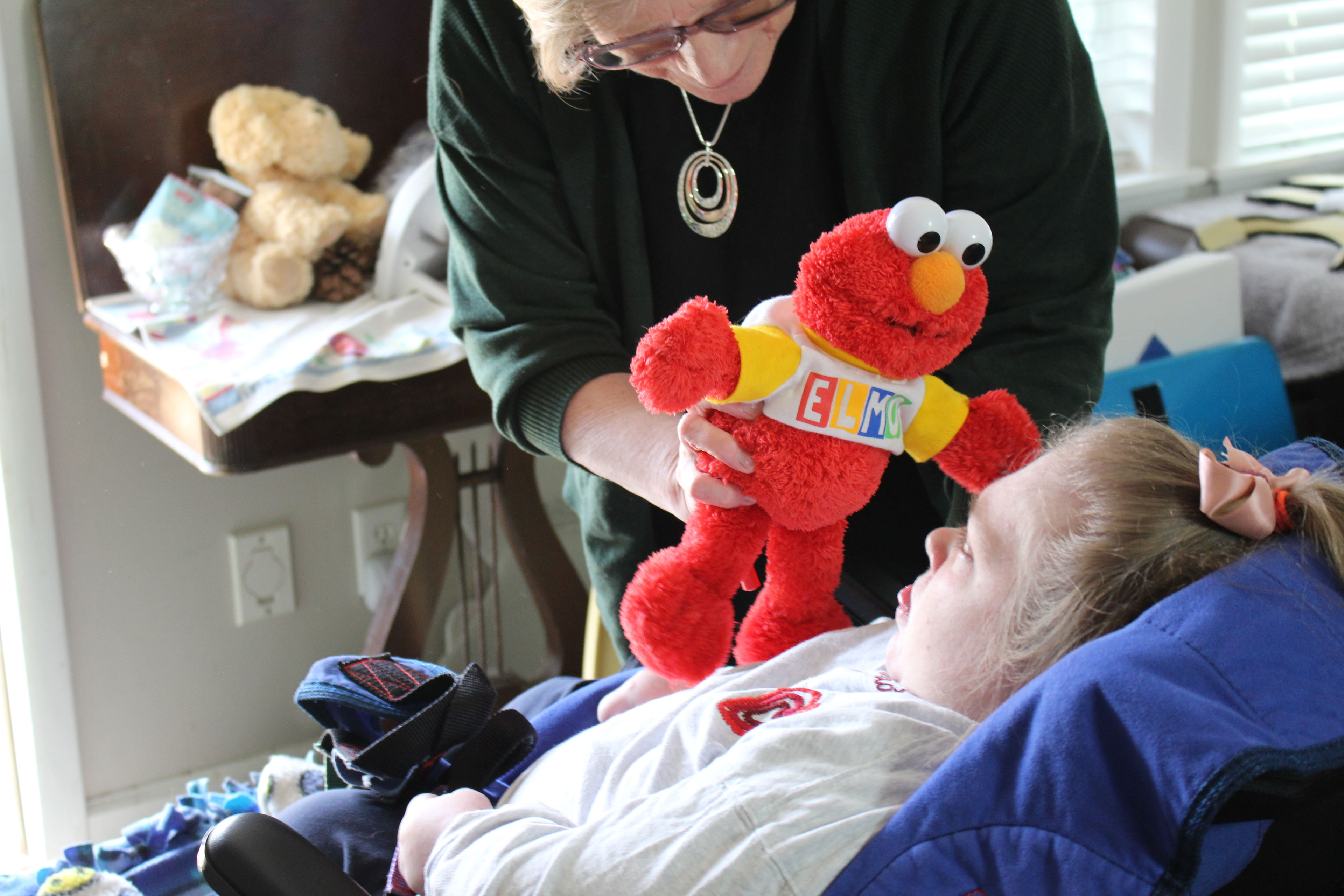Kaiser Health News
Despite Successes, Addiction Treatment Programs for Families Struggle to Stay Open
Christina Saint Louis
Wed, 13 Sep 2023 10:00:00 +0000
MORA, Minn. — Two playgrounds border the Recovering Hope Treatment Center for addiction that sits at the end of a gravel road in eastern Minnesota’s rural Kanabec County. A meeting room inside is furnished with rocking chairs and baby walkers. And there are strollers in the halls.
Recovering Hope is one of only five providers in the state that offer family-based residential treatment, allowing women to enter the program while pregnant or to bring one of their children younger than 5 with them for the duration of their stay. Men can receive outpatient treatment but aren’t permitted in the residential program.
It’s the only such residential program located in a rural Minnesota county and is licensed for 108 beds. It has a waitlist that can span from two to six weeks, depending on whether a woman plans to enter treatment alone or with her child.
“If you don’t provide family services, the parents run the risk of losing their kids,” said Ashley Snyder, a licensed drug and alcohol counselor at Recovering Hope.
Family-based residential treatment has been recognized by behavioral health professionals as having better outcomes for women and their children. But such programs often struggle to stay afloat because of staffing shortages and volatile funding. And because of that complexity, families in rural areas are less likely to find such a residential treatment program in their communities.
Meanwhile, maternal opioid-related diagnoses have increased nationwide. From 2010 to 2017, the rates of women with those diagnoses at delivery increased by 131% and babies born with withdrawal symptoms increased by 82%, according to the Centers for Disease Control and Prevention. The increases disproportionately affected rural areas. At Recovering Hope, opioids are among the top substances, along with alcohol and meth, that lead women to seek treatment.
“There are too few programs,” said Margaret Ratcliff, an executive vice president at Volunteers of America, which co-published a national directory of family-based residential treatment programs with Wilder Research in 2019. At that time, the directory listed 362 family-based residential treatment programs nationwide, a number that experts, including Ratcliff, say is continually in flux.
Many of the programs offer some variation of the model in place at Recovering Hope, though the maximum age of children varies.
From its own affiliations with such programs, Ratcliff said, Volunteers of America has seen that “the problem is that Medicaid does not cover the cost of a comprehensive program, and grants come and go.”
Even at Recovering Hope, which has operated since 2016 and is expanding its outpatient treatment to include teenagers and building sober houses, smaller insurance reimbursements have affected care. Women in the center’s residential program previously spent up to an average of 40 days in high-intensity care at the beginning of their treatment, but that timespan is now closer to 30 days to contain costs due to those low reimbursement rates. Most of the women in the residential treatment program are covered by Medicaid.
High-intensity care accounts for a third of the center’s treatment plan. On average, women’s full residential treatment at Recovering Hope lasts 90 to 120 days. During that time, women can enroll their children in on-site day care and bring them along to programming. The kids receive regular visits from a Head Start educator and a psychologist.
Researchers say that family-based residential treatment can improve women’s pregnancy outcomes by keeping them away from drug use during their pregnancy and strengthening their bond with their children. Experts also say the programs increase the likelihood that women will complete treatment.
Beyond the financial hurdles involved in running family treatment programs, managers face logistical constraints. Providing schooling is one of the challenges that come with operating a family-based treatment center, Snyder said. For example, she said, part of the reason the facility allows only for children younger than 5 is to not affect local school enrollment.
“The school district kind of said, ‘Hey, if you put kids in our school district, and then take them out, that’s not great for us,’” she said. “‘We don’t have enough teachers. So, if you put three kids in the classroom that’s already at max, we would technically need to hire another teacher, but they’re only here for three months.’”
In addition to the age restriction, Recovering Hope limits the women to bringing one child each.
For Lisa Thompson, who was in residential treatment there from January to April, that limit led her to leave both of her kids with their grandmother rather than split them up.
“First getting there, it was really hard seeing women with their children and not having mine,” Thompson, 40, said. “But after being there, and becoming more comfortable, it was just nice being able to have that connection with other mothers there.”
For Gabriela Cajucom, Recovering Hope’s ability to accommodate one child helped her reunite with her oldest son one month into her inpatient program, which ran from November to February. Child Protective Services had originally placed him with his grandmother but allowed him to live with Cajucom as she completed her treatment.
“He even just ran up to one of the old day care ladies, like totally remembered her and gave her a hug,” said Cajucom, 26, who since has moved to outpatient treatment and is set to graduate in October. “It was a very good community feeling.”
CPS granted her custody of her son in May.
But despite success stories from Recovering Hope and other programs, some states have found it difficult to keep such facilities running.
In neighboring North Dakota, the state Department of Health and Human Services has been trying to establish a family-based residential treatment option like Recovering Hope since 2020. The state has been without one since April 2019, when its lone provider shut down.
The department has issued three requests for proposals seeking providers to offer a treatment model that allows children to live with a parent undergoing residential treatment but didn’t receive any responses.
“It was during covid, the height of covid, and programs were really trying to maintain what they had, or they were already decreasing some of their services due to capacity or changing their practices to go to telehealth,” said Lacresha Graham, the department’s manager of addiction treatment and recovery program and policy. “I guess that caused providers to not want to look at expanding.”
In requesting proposals, the state outlined requirements, such as: The provider must have the residential capacity to serve at least 10 women and their children at once and situate the facility in a community with a neonatal intensive care unit.
Though the expectation is that providers already have experience in adult addiction treatment, they also must change their care model to accommodate both the physical and health needs of mothers and children, Graham said.
In May, Republican Gov. Doug Burgum approved a one-time $1 million allocation in the state Health and Human Services 2023-25 budget to fund family-based residential treatment, which can be used to cover construction and renovation costs. As a result, the department is working to issue another request for proposals to find a provider that offers services like those at Recovering Hope.
“Ideally, there would be multiple across the state so there’d be better access to locations for women that would need it,” Graham said. “Our priority is getting one up and running and see where we can go from there.”
——————————
By: Christina Saint Louis
Title: Despite Successes, Addiction Treatment Programs for Families Struggle to Stay Open
Sourced From: kffhealthnews.org/news/article/family-addiction-treatment-centers-scarce-rural-minnesota-north-dakota/
Published Date: Wed, 13 Sep 2023 10:00:00 +0000
Did you miss our previous article…
https://www.biloxinewsevents.com/dr-google-meets-its-match-dr-chatgpt/
Kaiser Health News
A California Lawmaker Leans Into Her Medical Training in Fight for Health Safety Net
SACRAMENTO, Calif. — State Sen. Akilah Weber Pierson anticipates that California’s sprawling Medicaid program, known as Medi-Cal, may need to be dialed back after Gov. Gavin Newsom releases his latest budget, which could reflect a multibillion-dollar deficit.
Even so, the physician-turned-lawmaker, who was elected to the state Senate in November, says her priorities as chair of a budget health subcommittee include preserving coverage for the state’s most vulnerable, particularly children and people with chronic health conditions.
“We will be spending many, many hours and long nights figuring this out,” Weber Pierson said of the lead-up to the state’s June 15 deadline for lawmakers to pass a balanced budget.
With Medicaid cuts on the table in Washington and Medi-Cal running billions of dollars over budget due to rising drug prices and higher-than-anticipated costs to cover immigrants without legal status, Weber Pierson’s dual responsibilities — maintaining a balanced budget and delivering compassionate care to the state’s poorest residents — could make her instrumental in leading Democrats through this period of uncertainty.
President Donald Trump has said GOP efforts to cut federal spending will not touch Medicaid beyond “waste, fraud, and abuse.” Congressional Republicans are considering going after states such as California that extend coverage to immigrants without legal status and imposing restrictions on provider taxes. California voters in November made permanent the state’s tax on managed-care health plans to continue funding Medi-Cal.
The federal budget megabill is winding its way through Congress, where Republicans have set a target of $880 billion in spending cuts over 10 years from the House committee that oversees the Medicaid program.
Health care policy researchers say that would inevitably force the program to restrict eligibility, narrow the scope of benefits, or both. Medi-Cal covers 1 in 3 Californians, and more than half of its nearly $175 billion budget comes from the federal government.
One of a handful of practicing physicians in the state legislature, Weber Pierson is leaning heavily on her experience as a pediatric and adolescent gynecologist who treats children with reproductive birth defects — one of only two in Southern California.
Weber Pierson spoke to KFF Health News correspondent Christine Mai-Duc in Sacramento this spring. She has introduced bills to improve timely access to care for pregnant Medi-Cal patients, require developers to mitigate bias in artificial intelligence algorithms used in health care, and compel health plans to cover screenings for housing, food insecurity, and other social determinants of health.
This interview has been edited for length and clarity.
Q: You’re a state senator, you practice medicine in your district, and you’re also a mom. What does that look like day to day?
A: When you grow up around someone who juggles a lot, that just kind of becomes the norm. I saw this with my mom [former state Assembly member Shirley Weber, who is now secretary of state].
I’m really happy that I’m able to continue with my clinical duties. Those in the health care profession understand how much time, energy, effort, and money we put into becoming a health care provider, and I’m still fairly early in my career. With my particular specialty, it would also be a huge void in the San Diego region for me to step back.
Q: What are the biggest threats or challenges in health care right now?
A: The immediate threats are the financial issues and our budget. A lot of people do not understand the overwhelming amount of dollars that go into our health care system from the federal government.
Another issue is access. Almost everybody in California is covered by insurance. The problem is that we have not expanded access to providers. If you have insurance but your nearest labor and delivery unit is still two hours away, what exactly have we really done for those patients?
The third thing is the social determinants of health. The fact that your life expectancy is based on the ZIP code in which you were born is absolutely criminal. Why are certain areas devoid of having supermarkets where you can go and get fresh fruits and vegetables? And then we wonder why certain people have high blood pressure and diabetes and obesity.
Q: On the federal level, there’s a lot of conversation happening around Medicaid cuts, reining in the MCO tax, and potentially dropping Affordable Care Act premium subsidies. Which is the biggest threat to California?
A: To be quite honest with you, all of those. The MCO tax was a recognition that we needed more providers, and in order to get more providers, we need to increase the Medi-Cal reimbursement rates. The fact that now it is at risk is very, very concerning. That is how we are able to care for those who are our most vulnerable in our state.
Q: If those cuts do come, what do we cut? How do we cut it?
A: We are in a position where we have to talk about it at this point. Our Medi-Cal budget, outside of what the federal government may do, is exploding. We definitely have to ensure that those who are our most vulnerable — our kids, those with chronic conditions — continue to have some sort of coverage. What will that look like?
To be quite honest with you, at this point, I don’t know.
Q: How can the state make it the least painful for Californians?
A: Sometimes the last one to the table is the first one to have to leave the table. And so I think that’s probably an approach that we will look at. What were some of the more recent things that we’ve added, and we’ve added a lot of stuff lately. How can we trim down — maybe not completely eliminate, but trim down on — some of these services to try to make them more affordable?
Q: When you say the last at the table, are you talking about the expansion of Medi-Cal coverage to Californians without legal status? Certain age groups?
A: I don’t want to get ahead of this conversation, because it is a very large conversation between not only me but also the [Senate president] pro tem, the Assembly speaker, and the governor’s office. But those conversations are being had, keeping in mind that we want to provide the best care for as many people as possible.
Q: You’re carrying a bill related to AI in health care this year. Tell me what you’re trying to address.
A: It has just exploded at a speed that I don’t know any of us were anticipating. We are trying to play catch-up, because we weren’t really at the table when all of this stuff was being rolled out.
As we advance in technology, it’s been great; we’ve extended lives. But we need to make sure that the biases that led to various discrepancies and health care outcomes are not the same biases that are inputted into that system.
Q: How does Sacramento policy impact your patients and what experience as a physician do you bring to policymaking?
A: I speak with my colleagues with actual knowledge of what’s happening with our patients, what’s happening in the clinics. My patients and my fellow providers will often come to me and say, “You guys are getting ready to do this, and this is why it’s going to be a problem.” And I’m like, “OK, that’s really good to know.”
I work at a children’s facility, and right after the election, specialty hospitals were very concerned around funding and their ability to continue to practice.
In the MCO discussion, I was hearing from providers, hospitals on the ground on a regular basis. With the executive order [on gender-affirming care for transgender youth], I have seen people that I work with concerned, because these are patients that they take care of. I’m very grateful for the opportunity to be in both worlds.
This article was produced by KFF Health News, which publishes California Healthline, an editorially independent service of the California Health Care Foundation.
KFF Health News is a national newsroom that produces in-depth journalism about health issues and is one of the core operating programs at KFF—an independent source of health policy research, polling, and journalism. Learn more about KFF.
USE OUR CONTENT
This story can be republished for free (details).
The post A California Lawmaker Leans Into Her Medical Training in Fight for Health Safety Net appeared first on kffhealthnews.org
Note: The following A.I. based commentary is not part of the original article, reproduced above, but is offered in the hopes that it will promote greater media literacy and critical thinking, by making any potential bias more visible to the reader –Staff Editor.
Political Bias Rating: Center-Left
This content leans center-left due to its focus on preserving and protecting Medi-Cal, a Medicaid program serving vulnerable populations, particularly children and immigrants. It highlights concerns about federal budget cuts proposed by Republicans and emphasizes the importance of maintaining social services, healthcare access, and addressing social determinants of health. The perspective is generally supportive of expanding healthcare coverage and cautious about fiscal reductions affecting marginalized groups, which aligns with moderate Democratic and progressive viewpoints.
Kaiser Health News
Cutting Medicaid Is Hard — Even for the GOP
The Host
Julie Rovner
KFF Health News
Julie Rovner is chief Washington correspondent and host of KFF Health News’ weekly health policy news podcast, “What the Health?” A noted expert on health policy issues, Julie is the author of the critically praised reference book “Health Care Politics and Policy A to Z,” now in its third edition.
After narrowly passing a budget resolution this spring foreshadowing major Medicaid cuts, Republicans in Congress are having trouble agreeing on specific ways to save billions of dollars from a pool of funding that pays for the program without cutting benefits on which millions of Americans rely. Moderates resist changes they say would harm their constituents, while fiscal conservatives say they won’t vote for smaller cuts than those called for in the budget resolution. The fate of President Donald Trump’s “one big, beautiful bill” containing renewed tax cuts and boosted immigration enforcement could hang on a Medicaid deal.
Meanwhile, the Trump administration surprised those on both sides of the abortion debate by agreeing with the Biden administration that a Texas case challenging the FDA’s approval of the abortion pill mifepristone should be dropped. It’s clear the administration’s request is purely technical, though, and has no bearing on whether officials plan to protect the abortion pill’s availability.
This week’s panelists are Julie Rovner of KFF Health News, Anna Edney of Bloomberg News, Maya Goldman of Axios, and Sandhya Raman of CQ Roll Call.
Panelists
Anna Edney
Bloomberg News
Maya Goldman
Axios
Sandhya Raman
CQ Roll Call
Among the takeaways from this week’s episode:
- Congressional Republicans are making halting progress on negotiations over government spending cuts. As hard-line House conservatives push for deeper cuts to the Medicaid program, their GOP colleagues representing districts that heavily depend on Medicaid coverage are pushing back. House Republican leaders are eying a Memorial Day deadline, and key committees are scheduled to review the legislation next week — but first, Republicans need to agree on what that legislation says.
- Trump withdrew his nomination of Janette Nesheiwat for U.S. surgeon general amid accusations she misrepresented her academic credentials and criticism from the far right. In her place, he nominated Casey Means, a physician who is an ally of HHS Secretary Robert F. Kennedy Jr.’s and a prominent advocate of the “Make America Healthy Again” movement.
- The pharmaceutical industry is on alert as Trump prepares to sign an executive order directing agencies to look into “most-favored-nation” pricing, a policy that would set U.S. drug prices to the lowest level paid by similar countries. The president explored that policy during his first administration, and the drug industry sued to stop it. Drugmakers are already on edge over Trump’s plan to impose tariffs on drugs and their ingredients.
- And Kennedy is scheduled to appear before the Senate’s Health, Education, Labor and Pensions Committee next week. The hearing would be the first time the secretary of Health and Human Services has appeared before the HELP Committee since his confirmation hearings — and all eyes are on the committee’s GOP chairman, Sen. Bill Cassidy of Louisiana, a physician who expressed deep concerns at the time, including about Kennedy’s stances on vaccines.
Also this week, Rovner interviews KFF Health News’ Lauren Sausser, who co-reported and co-wrote the latest KFF Health News’ “Bill of the Month” installment, about an unexpected bill for what seemed like preventive care. If you have an outrageous, baffling, or infuriating medical bill you’d like to share with us, you can do that here.
Plus, for “extra credit” the panelists suggest health policy stories they read this week that they think you should read, too:
Julie Rovner: NPR’s “Fired, Rehired, and Fired Again: Some Federal Workers Find They’re Suddenly Uninsured,” by Andrea Hsu.
Maya Goldman: STAT’s “Europe Unveils $565 Million Package To Retain Scientists, and Attract New Ones,” by Andrew Joseph.
Anna Edney: Bloomberg News’ “A Former TV Writer Found a Health-Care Loophole That Threatens To Blow Up Obamacare,” by Zachary R. Mider and Zeke Faux.
Sandhya Raman: The Louisiana Illuminator’s “In the Deep South, Health Care Fights Echo Civil Rights Battles,” by Anna Claire Vollers.
Also mentioned in this week’s podcast:
Credits
Francis Ying
Audio producer
Emmarie Huetteman
Editor
To hear all our podcasts, click here.
And subscribe to KFF Health News’ “What the Health?” on Spotify, Apple Podcasts, Pocket Casts, or wherever you listen to podcasts.
We encourage organizations to republish our content, free of charge. Here’s what we ask:
You must credit us as the original publisher, with a hyperlink to our kffhealthnews.org site. If possible, please include the original author(s) and KFF Health News” in the byline. Please preserve the hyperlinks in the story.
It’s important to note, not everything on kffhealthnews.org is available for republishing. If a story is labeled “All Rights Reserved,” we cannot grant permission to republish that item.
Have questions? Let us know at KHNHelp@kff.org
The post Cutting Medicaid Is Hard — Even for the GOP appeared first on kffhealthnews.org
Note: The following A.I. based commentary is not part of the original article, reproduced above, but is offered in the hopes that it will promote greater media literacy and critical thinking, by making any potential bias more visible to the reader –Staff Editor.
Political Bias Rating: Center-Left
The content provides a balanced overview of current health policy issues with a slight lean towards framing Republican budget efforts and Medicaid cuts critically, emphasizing the potential negative impacts on constituents reliant on these programs. The coverage fairly presents multiple viewpoints, including fiscal conservatives and moderates within the Republican Party, but the tone suggests some skepticism towards conservative budget priorities and Trump administration policies. Overall, the focus on health care access and concerns about cuts aligns with a center-left perspective without strong partisan language or ideological bias.
Kaiser Health News
As Republicans Eye Sweeping Medicaid Cuts, Missouri Offers a Preview
CRESTWOOD, Mo. — The prospect of sweeping federal cuts to Medicaid is alarming to some Missourians who remember the last time the public medical insurance program for those with low incomes or disabilities was pressed for cash in the state.
In 2005, Missouri adopted some of the strictest eligibility standards in the nation, reduced benefits, and increased patients’ copayments for the joint federal-state program due to state budget shortfalls totaling about $2.4 billion over several prior years. More than 100,000 Missourians lost coverage as a result, and the Federal Reserve Bank of Philadelphia reported that the changes led to increases in credit card borrowing and debt in third-party collections.
A woman told NPR that year that her $6.70-an-hour McDonald’s job put her over the new income limits and rendered her ineligible, even though she was supporting three children on about $300 a week. A woman receiving $865 a month in disability payments worried at a town hall meeting about not being able to raise her orphaned granddaughter as the state asked her to pay $167 a month to keep her health coverage.
Now, Missouri could lose an estimated $2 billion a year in federal funding as congressional Republicans look to cut at least $880 billion over a decade from a pool of funding that includes Medicaid programs nationwide. Medicaid and the closely related Children’s Health Insurance Program together insure roughly 79 million people — about 1 in 5 Americans.
“We’re looking at a much more significant impact with the loss of federal funds even than what 2005 was,” said Amy Blouin, president of the progressive Missouri Budget Project think tank. “We’re not going to be able to protect kids. We’re not going to be able to protect people with disabilities from some sort of impact.”
At today’s spending levels, a cut of $880 billion to Medicaid could lead to states’ losing federal funding ranging from $78 million a year in Wyoming to $13 billion a year in California, according to an analysis from KFF, a health information nonprofit that includes KFF Health News. State lawmakers nationwide would then be left to address the shortfalls, likely through some combination of slashing benefits or eligibility, raising taxes, or finding a different large budget item to cut, such as education spending.
Republican lawmakers are floating various proposals to cut Medicaid, including one to reduce the money the federal government sends to states to help cover adults who gained access to the program under the Affordable Care Act’s provision known as Medicaid expansion. The 2010 health care law allowed states to expand Medicaid eligibility to cover more adults with low incomes. The federal government is picking up 90% of the tab for that group. About 20 million people nationwide are now covered through that expansion.
Missouri expanded Medicaid in 2021. That has meant that a single working-age adult in Missouri can now earn up to $21,597 a year and qualify for coverage, whereas before, nondisabled adults without children couldn’t get Medicaid coverage. That portion of the program now covers over 329,000 Missourians, more than a quarter of the state’s Medicaid recipients.
For every percentage point that the federal portion of the funding for that group decreases, Missouri’s Medicaid director estimated, the state could lose $30 million to $35 million a year.
But the equation is even more complicated given that Missouri expanded access via a constitutional amendment. Voters approved the expansion in 2020 after the state’s Republican leadership resisted doing so for a decade. That means changes to Medicaid expansion in Missouri would require voters to amend the state constitution again. The same is true in South Dakota and Oklahoma.
So even if Congress attempted to narrowly target cuts to the nation’s Medicaid expansion population, Washington University in St. Louis health economist Timothy McBride said, Missouri’s expansion program would likely stay in place.
“Then you would just have to find the money elsewhere, which would be brutal in Missouri,” McBride said.
In Crestwood, a suburb of St. Louis, Sandra Smith worries her daughter’s in-home nursing care would be on the chopping block. Nearly all in-home services are an optional part of Medicaid that states are not required to include in their programs. But the services have been critical for Sandra and her 24-year-old daughter, Sarah.
Sarah Smith has been disabled for most of her life due to seizures from a rare genetic disorder called Dravet syndrome. She has been covered by Medicaid in various ways since she was 3.

She needs intensive, 24-hour care, and Medicaid pays for a nurse to come to their home 13 hours a day. Her mother serves as the overnight caregiver and covers when the nurses are sick — work Sandra Smith is not allowed to be compensated for and that doesn’t count toward the 63-year-old’s Social Security.
Having nursing help allows Sandra Smith to work as an independent podcast producer and gives her a break from being the go-to-person for providing care 24 hours a day, day after day, year after year.
“I really and truly don’t know what I would do if we lost the Medicaid home care. I have no plan whatsoever,” Sandra Smith said. “It is not sustainable for anyone to do infinite, 24-hour care without dire physical health, mental health, and financial consequences, especially as we parents get into our elder years.”
Elias Tsapelas, director of fiscal policy at the conservative Show-Me Institute, said potential changes to Medicaid programs depend on the extent of any budget cuts that Congress ultimately passes and how much time states have to respond.
A large cut implemented immediately, for example, would require state legislators to look for parts of the budget they have the discretion to cut quickly. But if states have time to absorb funding changes, he said, they would have more flexibility.
“I’m not ready to think that Congress is going to willingly put us on the path of making every state go cut their benefits for the most vulnerable,” Tsapelas said.
Missouri’s congressional delegation split along party lines over the recent budget resolution calling for deep spending cuts, with the Republicans who control six of the eight House seats and both Senate seats all voting for it.
But 76% of the public, including 55% of Republicans, say they oppose major federal funding cuts to Medicaid, according to a national KFF poll conducted April 8-15.
And Missouri Sen. Josh Hawley, a Republican, has said that he does not support cutting Medicaid and posted on the social platform X that he was told by President Donald Trump that the House and Senate would not cut Medicaid benefits and that Trump won’t sign any benefit cuts.
“I hope congressional leadership will get the message,” Hawley posted. He declined to comment for this article.
U.S. House Republicans are aiming to pass a budget by Memorial Day, after many state legislatures, including Missouri’s, will have adjourned for the year.
Meanwhile, Missouri lawmakers are poised to pass a tax cut that is estimated to reduce state revenue by about $240 million in the first year.
The post As Republicans Eye Sweeping Medicaid Cuts, Missouri Offers a Preview appeared first on kffhealthnews.org
Note: The following A.I. based commentary is not part of the original article, reproduced above, but is offered in the hopes that it will promote greater media literacy and critical thinking, by making any potential bias more visible to the reader –Staff Editor.
Political Bias Rating: Center-Left
This content displays a center-left political bias by emphasizing the negative impacts of proposed Republican-led federal cuts to Medicaid funding. It highlights the struggles of low-income and disabled individuals who rely on Medicaid, underscores the importance of Medicaid expansion, and includes perspectives from progressive advocates concerned about the consequences of funding reductions. Although it presents some conservative viewpoints, such as those from the Show-Me Institute and mentions Republican lawmakers’ positions, the overall tone supports maintaining or expanding social welfare programs, reflecting a center-left leaning perspective.
-

 News from the South - Missouri News Feed5 days ago
News from the South - Missouri News Feed5 days agoMissouri family, two Oklahoma teens among 8 killed in Franklin County crash
-

 News from the South - Georgia News Feed4 days ago
News from the South - Georgia News Feed4 days agoMotel in Roswell shutters after underage human trafficking sting | FOX 5 News
-

 News from the South - North Carolina News Feed3 days ago
News from the South - North Carolina News Feed3 days agoAerospace supplier, a Fortune 500 company, chooses North Carolina site | North Carolina
-

 News from the South - North Carolina News Feed2 days ago
News from the South - North Carolina News Feed2 days agoRaleigh woman gets 'miracle' she prayed for after losing thousands in scam
-

 News from the South - Florida News Feed2 days ago
News from the South - Florida News Feed2 days agoPalm Bay suspends school zone speed cameras again, this time through rest of school year
-

 News from the South - North Carolina News Feed6 days ago
News from the South - North Carolina News Feed6 days agoGas station employee killed, customer assaulted in Harnett Co. robbery
-

 Mississippi Today5 days ago
Mississippi Today5 days agoCoast protester suffers brain bleed after alleged attack by retired policeman
-

 News from the South - Georgia News Feed6 days ago
News from the South - Georgia News Feed6 days ago72nd Annual Reunion for those who once lived in Dunbarton, Sc
















































